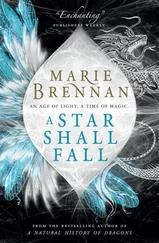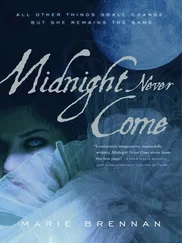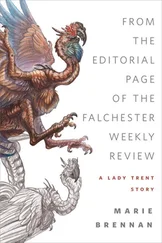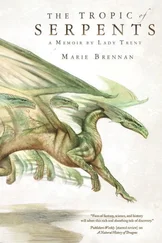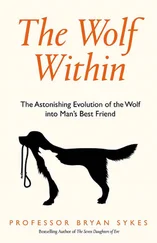But the land inside is hospitable—at least by Mrtyahaiman standards of hospitality. The valleys are quite deep, and at most times of year the surrounding mountains block enough of the wind to make the interior relatively pleasant. Farming is possible, and the herding of yaks; and while humans would find it quite hard going, the Draconeans, with the advantage of their adaptable biology, made do quite well.
How had they come to be there? Speculation alone could not tell me, but my command of the language did not yet suffice to address such abstract, complex topics. I had a strong suspicion that, as I had theorized before, folk memory in Tser-nga preserved knowledge of the Draconeans—for surely these were the “ice demons” feared by the people of Hlamtse Rong. Had they dwelt here since ancient times? Nothing in their architecture reminded me of the ruins I had seen in other parts of the world… but of course it would be absurdly difficult to build such things in a place like this. For one mad moment, I wondered if the inhabitants of the Sanctuary even knew that the larger Draconean civilization had fallen thousands of years before, far outside their isolated home.
Had I been able to explore, I might have learned more, and more rapidly. Three things, however, militated against my departing from Imsali. First, of course, was my own weakness and injury, though in time I overcame that issue. The second was that although it does not snow as heavily in the winter as during the monsoon, it does still snow; and winter is the primary season for the wind to come howling through.
The third is that we were not alone in that place.
In our village, yes. (If I may be permitted to term it “our village,” when I was only a temporary guest there.) But as it transpired, each of the villages within the Sanctuary had its own set of yak caretakers. This I discovered one day when Kahhe swooped down and bundled me straight back into the barn, without so much as a by-your-leave.
I do mean swooped . On that day I discovered that, while Draconean wings cannot support full flight, they are sufficient for a degree of gliding. Kahhe landed before me in the snow, clapped one scaled hand over my mouth, and hauled me bodily through the doorway. It is a mark of how much I had come to trust the sisters that after my first, muffled yelp of surprise, I made no protest at all. If she felt I needed to be removed from sight, I assumed it was for my own protection—and so it was.
Voices came from outside. By then I had heard enough of the three sisters that I could recognize their tones, and knew the new speakers were neither Zam nor Ruzt. Kahhe pointed with one claw. I stared. She pointed again, wings fluttering. I knew what she meant; it was only reluctance that held me back. But I had no better option, and so, obedient to her instructions, I climbed over the railing into one of the yak enclosures and wormed my way between the beasts until I was far enough back to be thoroughly concealed. Then she went outside.
Common sense told me to stay where I was. But I am, as Suhail is fond of saying, deranged as well as practical. I could learn a great deal by watching my three Draconeans interact with others… and I did not relish the thought of staying among the yaks, made fragrant by their enclosed quarters.
I crept back between them and went to the barn door, where I peered out through the crack. In the street outside I saw two new Draconeans speaking to Kahhe. Before long her sisters joined them, and then the conversation devolved into an argument.
The wind was too fierce that day for me to hear much of what they said, and I doubt I would have understood more than one word in ten even if I could hear. Though by then I had some facility with the language, at least within the narrow scope of my daily affairs, I still required my interlocutors to speak slowly and clearly—which is not a thing people generally do in natural conversation.
Watching their body language, however, kept me fascinated enough to forget the intense chill coming through the crack of the door. Their gestures were not those of humans: Ruzt kept holding up one hand, fingers spread and palm out, which among us would have been a sign of placation or a request for quiet while she spoke. Here it seemed to be a way of indicating refusal, like a shake of the head. At one point a newcomer half spread her wings; Kahhe responded by spreading her own to their fullest extent. The other followed suit, and the two commenced what I could only think of as a staring contest, except with wings instead of eyes. When Zam had lifted her ruff my first day awake, I had interpreted it as a fear response; here I thought the increase in apparent size signaled some kind of dominance challenge instead.
Kahhe won the contest, but in the end Ruzt curled her fingers inward and turned her palm toward her body, which signaled assent. All five Draconeans turned and came toward me.
I scrambled for cover once more. Whether any of the Draconeans took particular note of the restless and protesting yaks in one of the enclosures, I cannot say; by then I was crouched as low as I could be in the far corner, praying that the nearest beast would not decide to saunter away and leave me exposed. I only know that no one commented on my presence, which meant none of the strangers had noticed it.
They climbed up the ladders and were gone for some time. I heard a creaking from the upper attic, where fodder was kept, above the mews. I considered trying to shift to better cover, but did not quite dare; the risk of being caught in the open was too high. Finally they came back down, bearing sacks of the richer feed we gave to yaks that seemed to be languishing in their winter quarters. So: the argument had been about feed, and whether our village would give any to the visitors. Were their yaks wasting away, or had something gone wrong with their feed, or were the newcomers simply bullies extorting surplus from their neighbours? I never did find out.
Kahhe retrieved me once they were gone. Leaving the barn, I saw something that stopped me—in my tracks, I should say, but it would be more accurate to say in front of them. The ground by the barn door was thoroughly trampled, but I had been roaming about earlier, and the snow away from the usual path showed my footprints clearly.
Human footprints. Would anyone here recognize them as such? They certainly did not look Draconean, by size or by stride length.
When Kahhe saw what had alarmed me, she immediately went to consult with her sisters. After that I was issued a broom with which to blur my tracks, and the trio frowned more on me going anywhere they had not already trampled a path. (After a day or two of carrying the broom, I instead improvised a kind of straw skirt, which would drag behind me as I walked without need for special effort. As this also had the effect of insulating me further against the cold, I did not mind the additional burden.)
“What would have happened if they saw me?” I asked, staring in the direction the strangers had gone. I spoke in Akhian, as had become my habit; I was more focused on learning Ruzt’s language than teaching her any of my own, but the odds of her understanding a stray word or two were higher if I spoke that tongue.
She made no reply, and I doubt my meaning came through. In a sense, I am glad I did not get an answer then, for I would not have been prepared for the consequences.
* * *
That night I approached Kahhe and asked, by means of mime, whether I could examine her wings.
Ever since I woke up and discovered that Draconeans were not only real but alive (or at least since I had collected my wits in the aftermath of that discovery), I had wondered about their wings. Their ancient kin might have inhabited places like Akhia and Keonga, but these three dwelt in an exceedingly cold climate. A thin structure like a wing loses heat rapidly, because the blood vessels are unavoidably close to the surface. How did they deal with this problem?
Читать дальше


